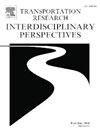从位置联系中解放出来:对COVID-19大流行期间和之后位置感知变化的描述性系统综述
IF 3.9
Q2 TRANSPORTATION
Transportation Research Interdisciplinary Perspectives
Pub Date : 2025-03-22
DOI:10.1016/j.trip.2025.101395
引用次数: 0
摘要
2019冠状病毒病大流行促使工作、家庭和城市结构之间的关系发生了范式转变,在家工作已成为推动变革的重要因素。本描述性系统综述使用PRISMA 2020,调查了COVID-19大流行期间WFH对传统地点联系的影响,这对城市地理、工作安排和居住偏好产生了深远影响。它包括从2001年开始在Scopus、Web of Science和PubMed数据库上索引的与位置、WFH和大流行相关的研究。2019年1月至2024年1月4日。关键主题包括观念和城市发展的变化(外迁和城市规划、流动性和社会经济学)。调查结果显示,虽然大流行期间的WFH认为有必要就近工作,并促使人们重新评估居住选择,但并不一定会发生永久性和一致的人口转移,而且应对措施是基于具体情况的。相反,一个复杂的过渡阶段,混合工作和不断发展的“地点”和“位置”观念已经出现,这反映了未来远程工作普遍存在时家庭和社区的中心地位。讨论了基于邻近的概念,如15分钟城市和对混合用途社区的关注。作者警告说,不受管理的转型可能会加剧现有的社会经济不平等,因为这些变化的程度在很大程度上取决于背景、组织政策和社会经济因素。全面的“多重危机”方法对于大流行后有复原力和公平的城市规划至关重要。建议进行纵向研究,以跟踪趋势并为今后的战略提供信息。本文章由计算机程序翻译,如有差异,请以英文原文为准。
Liberation from location ties: A descriptive systematic review of shifts in location perception during and after the COVID-19 pandemic
The COVID-19 pandemic has prompted a paradigm shift in the relationship between work, home, and urban structures, creating a situation where working from home (WFH) has become a significant driver of change. This descriptive-systematic review, using PRISMA 2020, investigates the impact of WFH during the COVID-19 pandemic on conventional location ties, which had far-reaching implications for urban geographies, work arrangements, and residential preferences. It includes studies related to location, WFH, and the pandemic indexed on Scopus, Web of Science, and PubMed databases from 01. Jan 2019 to Jan 04, 2024. Key themes include changes in perceptions and urban development (outmigration and city planning, mobility, and socioeconomics). The findings revealed that, while WFH during the pandemic has deemed the necessity of job proximity and prompted a re-evaluation of residential choices, permanent and unanimous population shifts haven’t necessarily occurred, and responses have been context-based. Instead, a complex and transitional phase with hybrid work and evolving “place” and “location” perceptions has emerged that reflects the centrality of home and neighborhood for the future when remote work is prevalent. Proximity-based concepts like the 15-minute city and the focus on mixed-use neighborhoods are discussed. Authors caution that unmanaged transitions may exacerbate existing socioeconomic inequities as the extent of these changes depends heavily on the context, organizational policies, and socioeconomic factors. A holistic “polycrisis” approach is crucial for resilient, equitable post-pandemic urban planning. Longitudinal studies are recommended to track trends and inform future strategies.
求助全文
通过发布文献求助,成功后即可免费获取论文全文。
去求助
来源期刊

Transportation Research Interdisciplinary Perspectives
Engineering-Automotive Engineering
CiteScore
12.90
自引率
0.00%
发文量
185
审稿时长
22 weeks
 求助内容:
求助内容: 应助结果提醒方式:
应助结果提醒方式:


